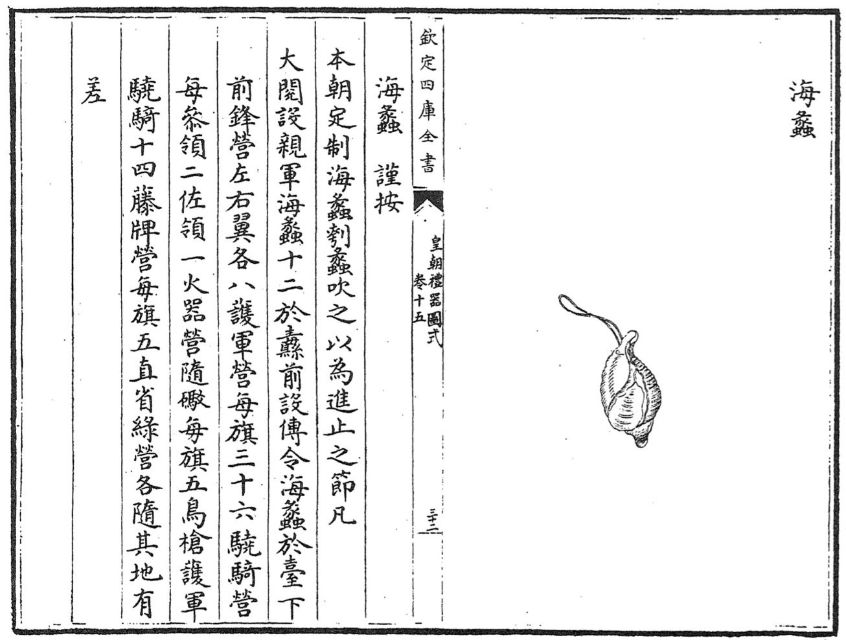How the conch brings man to war
This handgrip marks the point where the conch is supposed to be held. A strap like this, however, could indicate different types of usages. One I would like to discuss is the role the conch played in the military. In the chaos of battle, a handgrip like this would come in particularly handy, as it prevents the conch from falling out of one’s hand.
Early mentions of conches used in warfare are found in the Indian epics Ramayana and Mahābhārata, in which great warriors from around the 7th century BC use them as trumpets [Hornell 1914, p 118]. Conches have been deployed as military instruments in many regions in East Asia. In feudal Japan, conch blowing became a prominent skill as a complex system of different military conch calls came into use [Sterling 2008, p 252. ]. To this day conches are used during the changing of the guard at Gyeongbokgung palace in Seoul. The Qing military widely used conches and required many of its officers to personally purchase a conch [MandarinMansion].
This cotton strap was added by the arms trader mentioned earlier. This reminds us that our conch is a so-called composite object which can be traced back to one specific point of origin.
The conch was used in the army alongside other signalling means, such as flags and drums. One of the chief purposes of the conch was to spread signals over great distances. A skilled conch blower is able to produce many different pitches with a conch, more than is possible with the military bugle used often in the West. This allows for many different signals.
Conches would have been essential on the battlefield, as these turn into a cacophony of noise and gunshots. Qi Jiguang, a Ming dynasty general, emphasizes the futility of orders that are given verbally. Qing armies, for example, could consist of hundreds of thousands of troops. These would have been impossible to manage if not for very low or very high pitched signals and visual signs.
Additionally, the call of the conch sometimes served a psychological purpose. One could rally one’s own troops or frighten the enemy, as seen in the movie The Last Samurai. This is also mentioned in Dzengšeo’s Diary of a soldier which was written in the 17th century:
On the evening of the sixteenth, general Manggitu along with two hundred hand-picked troops headed toward the rebels. Screaming and blowing the conch here and there, they caused disarray among the rebels.
On another note, disobeying the signal of the conch was an offence not taken lightly. In the 1833 Forty rules of military command heavy punishments are handed out to those who ignore orders. These punishments differed depending on the soldier's rank and ethnicity. The distinction between ethnicities can be seen in the following paragraph:
The men in charge of blowing the conch, hitting the drums or striking the gong, upon being told to blow, hit or strike, will blow, hit or strike. When one is told to halt, you must halt. In the case this is disobeyed, Manchu and Mongol soldiers must receive 40 lashes, the soldier of the Green Banner [Chinese soldiers] must be stricken 30 times with a cane whilst being tied up. If this [order] is disobeyed when attacking the enemy in battle, [soldiers] must be cut to pieces till death follows.
